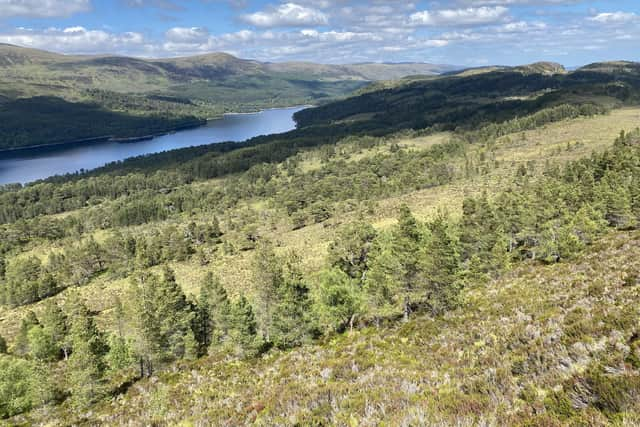Survival of Scottish pinewoods dating back to ice age on a ‘knife-edge’ – study
The four-year analysis by the rewilding charity Trees for Life, published today, warns that most of the woods are "on a knife-edge" and could become the last generation in a line stretching back to the last Ice Age.
The woodlands form a rich habitat found nowhere else in the world, and some are thousands of years old. Home to declining wildlife such as red squirrels, capercaillie and crossbills, only 42,000 acres of the original pinewoods survive.
Advertisement
Hide AdAdvertisement
Hide AdMajor threats identified in the report include high deer numbers, the spread of non-native conifers, lack of long-term management and emerging impacts of climate breakdown.


Trees For Life has now called for urgent action including dedicated and easily accessible long-term funding so that private landowners can save and restore their pinewoods and look after them in the future.
The charity is also calling for full implementation of proposed national measures to reduce deer numbers, as well as action to allow the pinewoods to expand into cooler areas such as higher up mountains in response to climate change.
Steve Micklewright, Trees for Life’s Chief Executive, said: "Our findings are an alarm bell for Scotland’s Caledonian pinewoods, which are such an important part of the country’s culture and environment.
"The majority of the surviving fragments are now on a knife-edge, and bold action is needed to save them from being lost forever. A landscape-scale approach backed by the Scottish Government is urgently needed to save, expand and connect up these precious woodlands before it is too late."
The Caledonian Forest once covered much of the Highlands, but following centuries of deforestation only around two per cent survives.
Over the past four years, Trees for Life assessed the state of 72 of the remaining 84 fragments of the ancient pinewoods, scattered across the Highlands from Loch Lomond, northwards to near Ullapool, and eastwards to Glen Ferrick near Aberdeen.
In one of the most comprehensive surveys of the pinewoods ever undertaken, the team carried out detailed studies of more than 1200 half-acre plots in total across the sites. The report, "Caledonian Pinewoods: Findings from the Caledonian Pinewood Recovery Project", found that Scotland’s national tree, the Scots pine, was in serious decline at a quarter of the plots.
Advertisement
Hide AdAdvertisement
Hide AdHigh impacts from artificially large deer populations were found to be the main barrier to the pinewoods’ recovery. The study found that deer were having serious impacts in around two-thirds of the plots by eating pine saplings, stripping important vegetation and causing some pinewoods to be replaced by birch.
Non-native conifers, originally planted in the 1950s, are still present in a third of the plots.
Comments
Want to join the conversation? Please or to comment on this article.